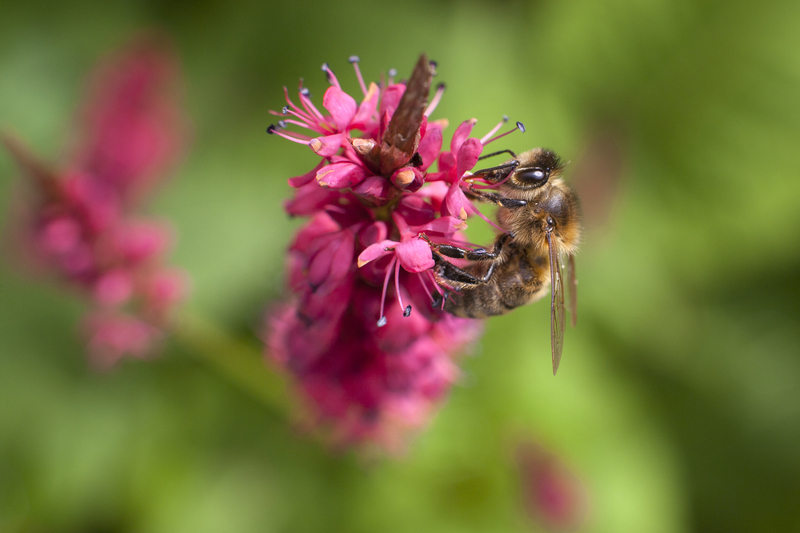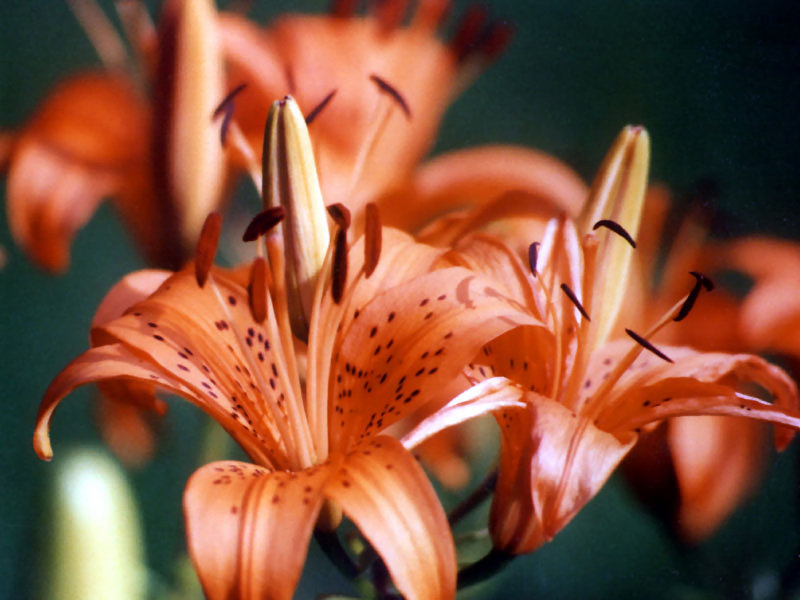Discover Tropical Plants You Can Successfully Grow in Your UK Garden
Are you dreaming of transforming your outdoor space into a lush, exotic paradise? Many UK gardeners believe that the country's cool and often unpredictable climate makes it impossible to grow dramatic, tropical-looking plants. However, with the right plant choices and care, you can enjoy a beautiful, tropical garden in Britain. In this guide, we'll introduce a wide variety of tropical and exotic plants that thrive in the UK climate, along with practical tips for design, planting, and maintenance.
Why Choose Tropical Plants for Your UK Garden?
Tropical-style gardens are increasingly popular among UK gardeners. These gardens offer:
- Spectacular foliage and vibrant colours that add year-round interest
- Unique textures and forms, creating a sense of adventure
- Increased biodiversity and support for pollinators
- The opportunity to enjoy a holiday vibe in your own backyard

How to Grow Exotic and Tropical Plants in the UK
Growing tropical plants in the UK does present a few challenges. However, by focusing on plant species that are either hardy or adaptable, and by providing some simple protection from cold, you can achieve a dramatic, tropical look.
Choose Hardy Tropical-Looking Plants
Some plants look like they belong in a jungle but are surprisingly tough. These often come from temperate regions with similar climates to Britain and handle cold, wet winters well.
Provide Shelter and Microclimates
Shelter your tropical plants from cold winter winds and create microclimates by planting near fences, walls, or structures. Walled gardens and patios can offer warmth and protection from frost.
Use Mulch and Winter Protection
Insulate roots with mulch in autumn, and wrap stems with fleece or straw where needed. Potted exotics can be moved under cover for winter.
Feed and Water Appropriately
Exotic plants are often hungry and thirsty. Feed regularly in summer and water during dry spells for the best growth and colour.
The Best Tropical Plants for UK Gardens
Let's dive into the top choices of tropical-looking plants you can grow outdoors in Britain. These species offer lush foliage, bold shapes, and even exotic flowers.
1. Tree Ferns (Dicksonia antarctica)
Tree ferns instantly deliver a Jurassic, primeval vibe. Native to Australia and Tasmania, Dicksonia antarctica is the hardiest variety for UK gardens.
- Height: Slowly grows up to 4m
- Foliage: Huge, arching fronds
- Hardiness: Down to -10°C with winter fleece protection
2. Hardy Banana (Musa basjoo)
Bring a truly tropical feel with Musa basjoo, a banana plant that's remarkably hardy.
- Height: Up to 4m; large, paddle-shaped leaves
- Will not fruit in the UK, but the architectural leaves create drama
- Protection: Cut back and wrap stem with straw and fleece in winter
3. Cordyline (Cordyline australis)
This palm-like plant offers striking, upright foliage and is very well suited to the UK's conditions.
- Comes in green, red, and variegated varieties
- Drought tolerant and easy to grow, even in coastal regions
4. Canna Lilies (Canna indica)
If you want bold colour and lush leaves, cannas are a must. These rhizomatous perennials offer huge banana-shaped leaves in green, bronze or variegated forms, plus vibrant summer blooms.
- Best in pots or sunny borders
- Lift or mulch heavily for winter, especially in colder areas
5. Fatsia japonica (Japanese Aralia)
The deeply lobed, glossy leaves of Fatsia japonica give a truly tropical look. Happily, it is:
- Evergreen and shade tolerant
- Withstands frost and cold winds
6. Tetrapanax papyrifer 'Rex' (Rice Paper Plant)
Few plants are bolder than Tetrapanax:
- Huge leaves up to 60cm across
- Dramatic, architectural form
- Hardy in most UK gardens with mulch
7. Trachycarpus fortunei (Chusan Windmill Palm)
This is the hardiest palm for the UK. With regular mulching, they can survive unprotected outdoors in most parts of Britain. Trachycarpus offers:
- Fan-shaped leaves and a distinctive trunk
- Slow-growing; eventually to 12m+ but takes decades
- Excellent for coastal or urban gardens
8. Bamboo
No UK exotic garden is complete without bamboo. Opt for well-behaved clumping varieties such as Fargesia, which:
- Are non-invasive
- Offer a graceful, waving backdrop year-round
- Provide shelter and movement
9. Ginger Lilies (Hedychium)
With exotic foliage and fragrant flowers, ginger lilies bring colour and scent to late summer:
- Tall spikes of white, orange, or yellow blooms
- Best in sunny, sheltered spots
- Mulch or cover crowns in winter
10. Eucomis (Pineapple Lily)
Pineapple lilies have unique flower spikes that resemble small pineapples.
- Glorious summer flowers atop strappy leaves
- Ideal for pots or sunny beds
- Lift bulbs after frost in coldest areas
Tropical-Looking Flowering Plants for Impact
A true UK tropical garden isn't just about leafy foliage--add bursts of colour with these flowering exotics:
- Calla lilies (Zantedeschia)
- Agapanthus (African lily)
- Crocosmia (brilliant orange flowers)
- Dahlia (vivid blooms in late summer)
- Alstroemeria (Peruvian lily)
Designing Your Exotic or Tropical UK Garden
Once you've chosen your favourite tropical garden plants, consider how to arrange them for maximum effect:
Create Layers
Mix tall, structural plants like tree ferns, palms, and bananas with medium-sized bamboos and lower-growing, shade-loving stars like Fatsia. Underplant with ferns, hostas, and heucheras for a dense, lush look.
Go for Bold Foliage Contrast
Pair glossy, round, or deeply lobed leaves (Fatsia, Tetrapanax) with spiky forms (Cordyline, Phormium) for drama and variety.
Add Water and Movement
Water features, ponds, or even simple bird baths reflect tropical luxury and attract wildlife, while tall grasses or bamboos sway in the breeze.
Embrace Containers and Portable Plants
Many tropical garden plants for the UK thrive in pots (especially Canna, Musa, Agapanthus). Pots can be moved to warmer spots for winter or grouped on the patio for instant effect.
Use Lighting for After-Dark Impact
Illuminate large leaves or dramatic stems at night with subtle uplighting to accentuate your garden's exotic feel, even after sunset.
Frequently Asked Questions About Tropical Gardening in the UK
Can I grow tropical plants outdoors in the UK all year round?
Many hardy "tropical" plants can thrive outdoors year-round in most UK regions, especially with mulch or fleece protection. More tender exotics must be overwintered under cover. Always check a plant's hardiness rating.
Which part of the UK is best for growing tropical plants?
Mild, coastal, and urban areas--such as the south coast, South Cornwall, South Wales, and central London--are ideal. However, microclimates in any garden (against a south-facing wall, for instance) can make all the difference.
What is the best soil for tropical garden plants in the UK?
Most thrive in well-drained, fertile soils, enriched with organic matter. Some (like cannas and ginger lilies) prefer moisture. Always research the individual requirements of each plant.
How do I protect tropical plants from UK winters?
Mulch thickly around roots, wrap stems and crowns in fleece or straw, and, for less hardy varieties, bring pots into a greenhouse or conservatory from November to March. Select plants suited to your local minimum temperatures.
More Unusual Hardy Exotics to Try
If you want to expand your tropical plant palette, consider these less common but UK-suitable exotics:
- Melianthus major (Honey bush): Dramatic, deeply-divided glaucous leaves; needs winter mulch
- Astelia: Silver spiky leaves; best in containers or sheltered borders
- Ensete ventricosum 'Maurelii' (Red Abyssinian banana): Huge red-tinged leaves; lift for winter
- Gunnera manicata: Enormous, prehistoric leaves; needs boggy spot or waterside
- Phormium (New Zealand flax): Sword-shaped leaves in many colours; evergreen and tough

Caring for Your Tropical or Exotic Plants
Follow these key tips to keep your garden looking lush and healthy:
- Water well during summer, especially newly planted specimens or those in pots
- Feed with high-potassium liquid fertiliser (such as tomato feed) every fortnight from April to August
- Keep an eye out for snails, slugs, and red spider mite - especially on cannas, hostas, and bananas
- Cut back dead or damaged leaves in spring to promote new growth
- Regularly mulch with compost or well-rotted manure for moisture and nutrients
Conclusion: Enjoy Your Tropical Oasis All Year Round
It's now easier than ever to create an exotic, tropical paradise in your UK garden. Whether you opt for hardy palms, giant-leaved bananas, lush ferns, or flowering cannas, you can capture the look and feel of far-off places without leaving home.
Experiment with layers, contrasting foliage, and bright blooms for year-round interest. With a little planning and protection, your garden can become a personal retreat filled with the sights and scents of the tropics--even in the unpredictable UK climate.
Start your tropical gardening adventure today, and bring a slice of paradise to your doorstep!